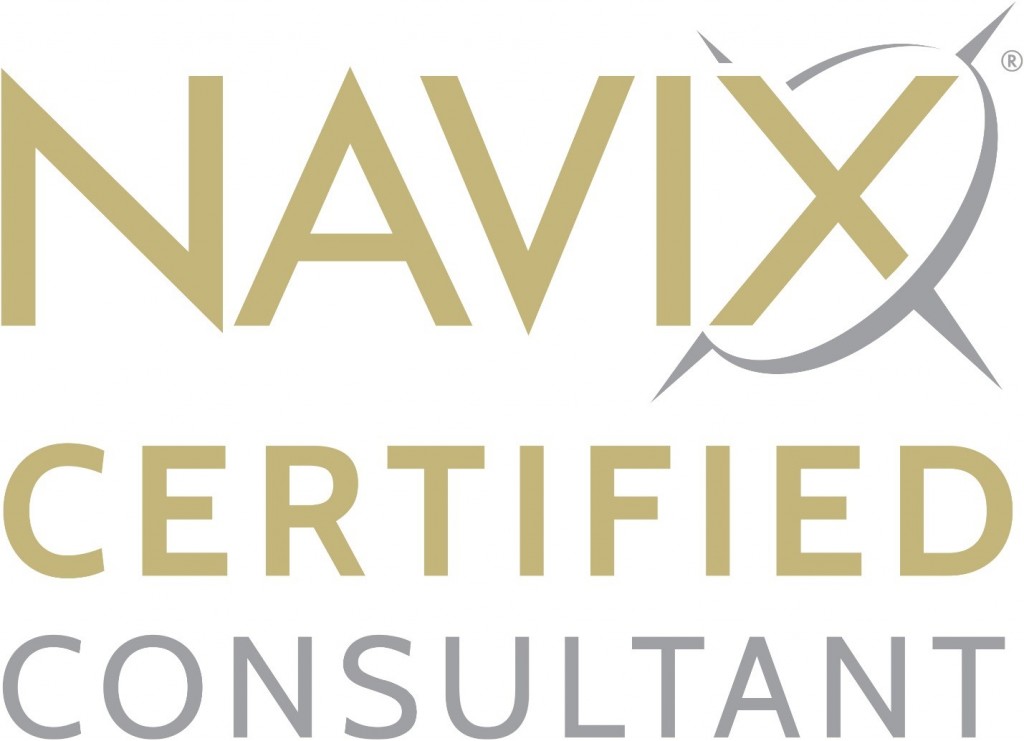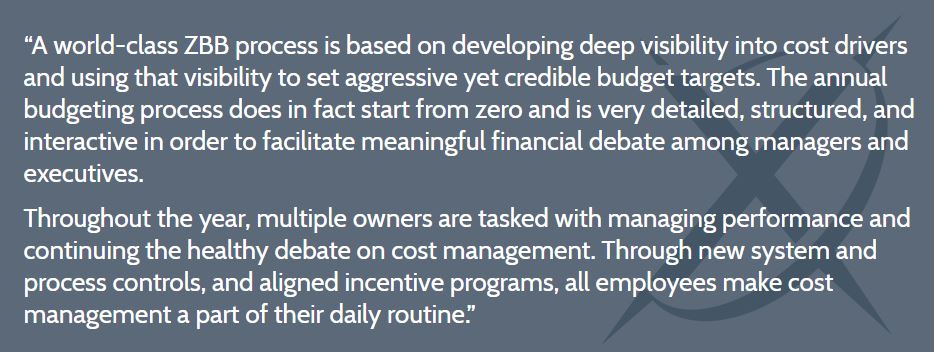
Archive for October, 2018
The Simple Little Org Chart Can Produce Big Value at Your Exit
Few business tools are as overlooked and underappreciated as the organizational (“org”) chart. Likely, you have diagramed one for your company.
We tend to pull them out at specific moments such as when we need to meet with a third party like a vendor, customer, lender, or new hire. If out of date, which they often are, we quickly update them. Then, after the meeting, the chart gets put away, forgotten until the need arises to pull it out again.
Most business owners stop there, having no further use for this unexciting little instrument. But hidden within the org chart is the potential to drive significant value in your company between now and exit. Here’s how.

The Future Org Chart Exercise
Convene your leadership team for an exercise called “The Future Org Chart.” Pick a future period of time such as three to five years out, and lead the team through the process of diagramming what the company org chart must look like on that date in order to support the expected growth between now and then.
Choose a date that matches up with the growth plans and timetable defined in your company’s long-term strategic growth plan. (If your company lacks a written growth plan, watch this webinar to learn why this is an expensive mistake.)
Start with a completely blank sheet, and then discuss and fill in the organizational structure needed to realize and support this growth. Assign job titles (those are the boxes) and define reporting roles and relationships (those are the connecting lines), but do not assign current employees to the future org chart — not yet.
You and your team will be tempted to start filling peoples’ names in the boxes, but it is important that you do not do this until you have a completed org chart that the entire team agrees with and supports. At this point, you now have a clear and written vision for the team that is required to grow and lead your company over the next three to five years.
Meeting With Your Leaders
There’s more to be gained. With the Future Org Chart template built, it is time to put names in the boxes. We recommend you meet individually and confidentially with your leaders to get their input because some of these conversations involve people’s careers:
- Some of your employees may have ambitions about climbing the organizational ladder and progressing into one of the higher positions forecasted in the Future Org Chart.
- Some employees may aspire to occupy a position currently occupied by another person.
- The Future Org Chart may call for adding new management layers into the company, and some employees may worry about being eclipsed or losing status if the level they currently occupy is subsidiary to a new level above it.
Issues or opportunities uncovered by these one-on-one conversations have the potential to be good for both the team and the company. Leaders aspiring to do more and earn promotions can be trained and coached on what is necessary to achieve their goals, and any fears about growth can be addressed. By necessitating these conversations, the Future Org Chart helps you develop and grow your current team.
Assigning Names
After receiving input from your team members, now it’s time to finally put current employees’ names in the appropriate boxes within the Future Org Chart. Once done, you may see the following:
- Some newly created positions have empty boxes. This indicates that to create the team of the future, your company will need to identify and hire a person qualified to fill that need.
- Some existing positions that are currently occupied become empty between now and the Future Org Chart’s effective date. This reveals some succession planning that must take place, typically because the employee currently occupying that position is retiring sometime within the next few years.
- Some names are listed in multiple boxes. This indicates that you have some people doing too many things. You may need to find ways to add new talent into the picture to reduce the organizational dependency on any one person who is over-allocated. The most important person to be wary of here is yourself — as the business’s owner, you cannot remain directly involved in too many functions. If the company is overly dependent on you it will be difficult if not impossible to achieve a successful exit.
- Some names do not belong in any box. This might happen for a couple of reasons. Perhaps the employee is not in alignment with the rest of the organization, and this exercise is shining a light on that challenging reality. Alternatively, perhaps the direction and pace of the company’s growth will eventually eliminate the need for a person’s role and skills. In either situation, it is best to recognize these inconsistencies and develop a response rather than miss or overlook the issue.
With this exercise complete, you now have a written picture of what the company’s team needs to look like in the future, as well as specific insights on what work needs to be done to make that future happen. The Future Org Chart exercise provides you with a road map for the company’s coaching, training, hiring, succession, and team development needs in order to realize the desired growth over the next several years. From there, you and your team can develop the plans and incremental steps required to migrate from the current organization to this organization of the future.
Maximizing Company Value
Having a solid plan for growth and the right team to achieve that plan would be reason enough to complete a Future Org chart, yet there is one final benefit for you to reap from this exercise. Building a competent team for the future that can deliver on this growth drives value in your company, which in turn supports achieving your exit goals: getting maximum value for the company, building a sustainable organization, and leaving on your own terms.
All of this from the simple, little, often-overlooked org chart.
Review our checklist, 25 Business Value Drivers, to identify steps that may enhance your business value.
To discuss your unique business, and how to plan for and achieve a successful exit, Call 772-210-4499 or email Tim to schedule a confidential, complimentary consultation.
What 65,390 Swedish Startups Reveal About Finding Happiness After Exit
A recent study of 65,390 Swedish business startups conducted over nearly 20 years offers one important insight for business owners as they prepare for exit — you might not be successful in your next venture.
Puzzlingly, the entrepreneurial experience these Swedish leaders gained from starting up their companies often did not translate into positive results if they later tried their hand at another company. Here’s why that is relevant when you are thinking about your exit.

Why Many Business Owners Underperform in New Ventures
Many U.S. business owners do not wish to retire after exit. Rather than lead a life of pure recreation, many owners intend to do something meaningful and challenging after they exit. Perhaps the most common path is to start up and/or lead a new company. This makes sense, for if you successfully built and exited from one company, then your skills, talents, and experience should produce growth and success in a new company.
Yet, ironically, this is not often the case. Many business owners fail to build or lead successful companies the next time around. When this happens, it can leave these owners with a sense of regret for having exited from their prior company; they find themselves denied the sense of accomplishment and achievement they once enjoyed before their exit. The Swedish startup founders experienced similar results.
Undoubtedly, a number of factors contribute to why business owners underperform in new ventures after an exit. Sometimes owners do not fully diagnose the specific alignment of market conditions that created the opportunities behind their company’s success. Also, with time we tend to forget or downplay the make-or-break moments and gut decisions that determined the difference between victory and defeat. Success is fragile.
Finally, many owners underestimate and underappreciate the effort, risk, and chance involved in creating their prior company’s results. If the new venture pursued after exit is not a quick success — and most situations are not — it’s easy to get disillusioned, frustrated, and distracted. As Microsoft founder Bill Gates once said, “Success is a lousy teacher. It seduces smart people into thinking they can’t lose.”
A Safer and Surer Way to Exit Happiness
As you think about and prepare for exit, the question of what you are going to do in life after exit may begin to loom large on the horizon. Too many owners unconsciously assume that prior business success practically guarantees future success. The majority of the time it does not, as confirmed by the Swedish research study.
Rather than make this assumption, there is a safer and surer way to exit happiness. Owners should begin investigating their plans for life after exit before actually exiting. Take two- to four-week “externships” to work on and test drive these new opportunities before you exit from your current company. That way, you will eliminate dead-end ideas, clarify your goals, and pave the way for a smoother transition into your new business venture.
For more information about preparing for life after exit, download our free ebook, “Your Last Five Years: How the Final 60 Months Will Make or Break Your Exit Success.”
To discuss your unique business, and how to plan for and achieve a successful exit, Call 772-210-4499 or email Tim to schedule a confidential, complimentary consultation.
Exit Planning Consultation
Are you thinking more and more about your future exit and realizing you have more questions than answers? Do you know what you want out of your exit but are unsure of the best plan to achieve your goals? Are you wrestling with your ideal time to exit? Unsure how to talk to your employees? Worried about your business partners? And what can be done to minimize taxes?

These are just some of the questions we commonly hear during the confidential, complimentary 45-minute consultations we hold with business owners to help them get ready for exit. For the fifth year in a row, this month we are standing by, ready to schedule a free consultation with you to answer your exit questions.
Feel free to watch this short video to learn more. Or, schedule your consultation here or by calling 772-210-4499 .

Ever Hear of ZBB? It Can Make You $$$
If you intend to exit by selling your company, either to an outside buyer (a competitor, private equity group, etc.) or an inside buyer (one or more employees), the price you receive at sale will likely be closely tied to the company’s earnings. The higher the earnings, the higher the likely sale price.

As we know, there are two potential ways to grow earnings — increase revenue and decrease expenses. Both methods can maximize earnings prior to selling your business. In our experience, many companies underestimate the amount of expense reduction that is possible prior to selling the company, without harming morale, the team, or key operations.
Remember, if you sell your company for a multiple of six times earnings (commonly calculated as your adjusted EBITDA), then every $1 of expenses you reduce potentially adds $6 to your selling price. Expense reduction prior to sale is a significant opportunity that many owners miss.
How ZBB Can Help Transform Cost Management
That’s where ZBB comes in to help. ZBB stands for zero-based budgeting, and it’s a little-used and often-misunderstood financial management tool. Zero-based budgeting simply means creating an annual budget for the company by starting at dollar zero, then adding expenses into the plan from there.
For each new expense, company management has to justify the item and amount, thus forcing a rigorous and thorough line-by-line examination of expenses that challenges old assumptions and habits each step of the way. (“Why do we spend money on that? Gee, I am not sure. I guess because we always have…”)
An excellent online article from McKinsey, one of the world’s largest consulting companies, describes how ZBB transforms cost management:

Create a Culture of Accountability and Transparency
Learning and adopting ZBB does not require nor lead to cutting expenses to the bone, as the McKinsey article points out. ZBB compels a more thorough, transparent, and objective look at expenses than many companies would otherwise implement.
When going through a ZBB exercise, it can be helpful to ask aloud “would anybody miss that?” as you and your team consider adding items back into the budget, working up from zero. If you don’t hear a loud outcry within the company that a certain expense would be sorely missed, that’s a clue that the expense in question might be better converted into a savings.
Properly implemented, ZBB is more surgical than draconian, and it can help create a culture of ownership thinking, accountability, and transparency.
Why ZBB Is a Worthwhile Effort
Many business owners, CFOs, and leadership teams are unfamiliar with ZBB and its methods. Some try ZBB but get bogged down in the details. Others fail to realize that ZBB is more than just a financial exercise; implementing ZBB can require rethinking employee communications, internal reporting, and even executive compensation.
The effort can be worth it. Following ZBB practices and principles, it is not usual for companies to realize high single-digit or low double-digit reductions in SG&A expenses. Sustained until company sale, that reduction can generate dramatic returns from increased selling price.
To learn more about ZBB, task the company CFO with studying the issue and reporting his or her findings to the team. There is excellent information online, including the article cited above as well as this article by Forbes. Additionally, contact us at NAVIX to discuss your exit plans and how we can help you and your team maximize your company’s sale price at exit.
To discuss your unique business, and how to plan for and achieve a successful exit, Call 772-210-4499 or email Tim to schedule a confidential, complimentary consultation.
 Tim is a Consultant to Business, Government and Not-for-Profits Organizations specializing in innovative and challenging ways for organizations to survive, to thrive and to build their teams.
Tim is a Consultant to Business, Government and Not-for-Profits Organizations specializing in innovative and challenging ways for organizations to survive, to thrive and to build their teams.